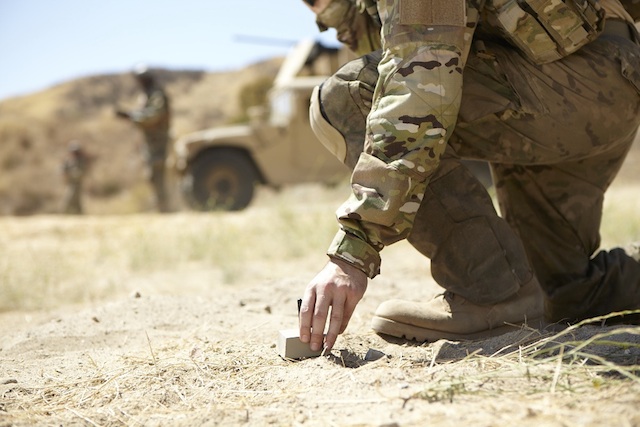Spy “rocks” talking to robot aircraft might be the future of USA-Mexico border surveillance if Lockheed Martin’s newly-updated network of small, easily disguised unattended ground sensors performs as promised.
In February, the company plans to have its self-powered ad-hoc network (SPAN) automatically cue a hand-launched unmanned aircraft in a test held at Camp Roberts, California. If successful, it will be a first for SPAN.
“All the technical applications are in place. We’re just waiting to get the airspace clearance,” Alex Moore, director of business development for C4ISR Systems at Lockheed Information Systems & Global Solutions, says.
Hidden in fake fibreglass rocks or covered by topsoil, SPAN sensors provide low-cost acoustic and seismic surveillance over a targeted area without requiring frequent battery changes.

©Lockheed Martin
If something triggers a sensor, that information bounces from one SPAN node to another until it reaches a tactical operations center, where an operator can dispatch an unmanned aircraft to the site of the alarm.
Now Lockheed wants to eliminate the need for the operations centre and have SPAN directly communicate with an unmanned aerial vehicle (UAV).
“It’s just so much faster to be able to have the UAV be cued automatically,” Moore explains.
So far, the US Department of Homeland Security has shown interest in the concept for border security, and there are potential military customers as well.
The next step is to offer SPAN, along with the company’s 6kg (13.2lb) Stalker unmanned aerial vehicle, as a turnkey solution. The pair “gives you more operational effectiveness” than just having ground sensors and drones working in isolation, he says.
Source: FlightGlobal.com


























